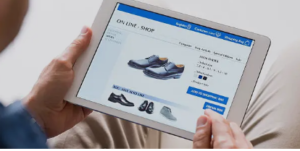Month: November 2023
Kite Foiling: Learn the Basics of Kite Foiling
November 27, 2023
Kite foiling is a new discipline that’s gaining popularity. It’s a great alternative to regular kitesurfing in light winds. But it’s important to remember that it takes a bit of learning and practice.
Foiling can be dangerous, especially for beginners. They tend to crash more often than regular riders. It’s best to wear a helmet.
Learning to foil
 Whether you’re a windsurfer or kitesurfer, learning to foil can be an exhilarating and humbling experience. But it takes time and patience to master the technique. It’s best to start with lessons and rent your equipment from a reputable kite shop.
Whether you’re a windsurfer or kitesurfer, learning to foil can be an exhilarating and humbling experience. But it takes time and patience to master the technique. It’s best to start with lessons and rent your equipment from a reputable kite shop.
An excellent learning place is calm water, without waves or other distractions. This will allow you to focus on the fundamentals of the sport, such as transferring pressure between your front and back foot. Foils are sensitive and need only a tiny movement of your weight forward or backward to change momentum.
You should also choose a shorter mast for beginners, as long foils can cause a more unstable feeling (due to more leverage). Also, a longer mast can cause you to touch down in rough conditions and reduce the margin of error when riding upwind. This can be especially dangerous for beginners. You should always wear an impact vest and helmet when practising.
Getting the foil up
If you want to make kite foiling part of your kitesurfing repertoire, you must take the time to learn the basics. It will help you get the most out of this discipline and allow you to ride in conditions that would otherwise be impossible. Foiling can also be very rewarding as it will enable you to ride waves with less power than you would typically need.
The best way to learn the foil is by riding flat across the wind and getting used to how the board feels. When you’re comfortable with this, it’s time to start shifting your weight back until the foil lifts off the water.
Foiling has been gaining popularity in recent years as it allows riders to surf and sail upwind in super light winds. However, it can be pretty tricky to learn. To make the process easier, follow these tips. They will help you avoid common mistakes that can lead to frustration and pain.
Getting the foil back down
This is a problematic aspect of the sport, but it will become easier as you improve. You must focus on maintaining speed and learning about pitch control, the height you hover over the water. Once you have mastered this, learning how to fly and land the foil will be easy.
Foiling can be done in almost any water, but knowing which conditions are appropriate for your skill level is essential. The ideal wind is around ten mph. Some lakes have restrictions on foiling, so make sure to check before going out.
One of the biggest mistakes in foiling is not using enough front foot pressure. Most beginners tend to be back foot heavy in their regular kiteboarding stance, but this can be dangerous when foiling. Too much back foot pressure can cause you to rise out of the water and crash. Foiling requires a different stance and balance that will take some time to develop.
Keeping your weight forward
When you’re new to foiling, keeping your weight forward is essential. This will help you stay centred and balanced and prevent you from falling off the board. It’s also necessary to keep your speed low when learning to foil. This will allow you to practice your technique and get used to the sensation of flying. For more information about kite foiling, click here.
The physics behind a hydrofoil is pretty simple: the shape of the foil creates lift by allowing water to rush through it. The amount of charge made depends on the foil’s surface area and whether it is a high or low-aspect foil. The low-aspect foil is more accessible to ride but has a lower top speed, while the high-aspect foil is faster overall.
It is also essential to keep your back foot in front of the rear foot strap (if you have one). This pressure will allow you to move along the yaw axis, not just the roll axis.
Online shoe store: How to Choose an Online Shoe Store
November 9, 2023
Shoes are essential items in every closet, and Oh-Hi online shoe stores provide them at competitive prices.
Customers’ most critical search parameter for clothing items is sizes. Our experts will install helpful mechanisms and search tools in your shop that allow you to divide your selection according to size.
Establishing an Oh-Hi online shoe store can be straightforward, with proper planning and business decisions. An effective business model can help your company thrive while sidestepping potential pitfalls.
Size Charts
 Anxious customers know it can be challenging to purchase online without knowing their size; offering a clear sizing chart on every product page will help them find their perfect match and decrease returns due to customers selecting an incorrect size.
Anxious customers know it can be challenging to purchase online without knowing their size; offering a clear sizing chart on every product page will help them find their perfect match and decrease returns due to customers selecting an incorrect size.
Ensure your chart includes conversions from US sizes to UK or EU sizing; if you sell women’s and men’s footwear, have charts for both. Some brands use half sizes; be sure to include these.
Utilise this chart to measure your feet and identify which shoe size best suits you. If you are uncertain about your measurements, mark them using a pen on the floor, then measure from that mark to your longest toe and use that distance measurement as the basis of finding your size in the chart based on centimetres rather than inches as most conversion charts use that metric unit of measurement.
Free Returns
Shoes purchased online can be risky. There’s no chance of trying them on, feeling them over your toe, or taking a quick walk through a store (unless shopping with my mom!). However, many retailers offer customer-friendly shipping and return policies that help reduce or even remove these risks of purchasing without first seeing them.
Most major online stores allow their customers to return unworn items purchased within a specified period without incurring a fee, including Zappos with its generous 365-day return policy backed by excellent customer service and J. Crew, which deducts shipping cost from returned returns sent back to its warehouse; Lands’ End deducts $6 from refund credits when shipping returns back, and DSW takes $8 away for nondiscounted item returns.
Customer Service
Oh-Hi online shoe stores must offer exceptional customer service to their clients. They should answer questions regarding fit, care and recommendations while providing an intuitive returns policy that makes life simple for their customers.
Shoppers prefer seeing large, clear photos that accurately depict a shoe’s true colour and any important details such as ornaments, stitching locations and glue application sites. A reliable online shoe store should adapt its website to display this information effectively, no matter the size of the device used to access its site.
Free Shipping
Shoes online shopping can be challenging as you cannot try them on and assess their fit before buying them. To prevent this hassle, savvy consumers opt for stores offering free shipping and returns and ensure their orders come packaged in boxes with padding so as not to get damaged in transit.
Online shoe stores that stand out from the pack tend to provide free shipping without minimum order values, increasing average order values while simultaneously increasing profit margins. Companies should, however, set an adequate threshold for their shipping costs so as to maximise profitability with each sale.
Shipping Method
Online shopping for shoes has become a common practice in the fashion industry. According to statistics, ecommerce sales within the shoe industry are expected to reach 22% of total sales by 2023. In order to meet these expectations, shoe stores need to develop a digital presence and adapt to new consumption habits.
The best shoe stores are able to make the process of purchasing and shipping shoes as easy as possible for their customers. They offer a variety of shoes, including boots and heels, and provide detailed descriptions to help shoppers decide which pair is right for them. They also offer return policies, a convenient way to check out, and can even accommodate international orders. They can also host special events and webinars to attract more consumers and increase their brand recognition. One of the most effective ways to do this is by collaborating with influencers, who can share their favourite pairs of shoes with their followers.
Non Bank Lenders: Financial Institutions Like Non Bank Lenders
November 2, 2023
Non-bank lenders are financial institutions without full banking licenses that use securitisation markets to raise wholesale funds from investors by bundling loans together and selling them off as securities.
Non bank lenders provide loans to borrowers who would normally be denied credit and offer more flexible loan terms than banks can.
They offer loans to borrowers with less-than-stellar credit
 No matter your financial goals – whether that means buying your dream home or expanding your business – non-bank lenders offer various loan types with more lenient lending criteria than traditional banks – plus, their application process is faster.
No matter your financial goals – whether that means buying your dream home or expanding your business – non-bank lenders offer various loan types with more lenient lending criteria than traditional banks – plus, their application process is faster.
Peer-to-peer (P2P) lending platforms, or “peer-to-peer lending”, have also contributed significantly to nonbank lending growth. Such platforms link borrowers with investors willing to provide funding, known as peer-to-peer (P2P). However, it must be remembered that P2P lending platforms may serve as financial intermediaries and should, therefore, be carefully monitored; their exposure to high-risk borrowers and fluctuating funding makes them vulnerable to negative shocks.
They are more flexible than banks.
Non-bank lenders typically boast lower regulatory burdens and greater flexibility compared to banks due to being smaller organisations with fewer layers and red tape, making lending decisions faster while more effectively communicating them to borrowers. Their quicker turnaround times and superior service make non-bank lenders an attractive option for many borrowers.
Loan spreads arranged by non-bank arrangers are higher than those provided by banks. However, this difference is mostly accounted for by riskier pools and risk premia rather than any differences in loan terms. Furthermore, during domestic financial crises, non-bank arrangers tend to reduce syndicated credit provision more forcefully than banks.
This finding is significant as it suggests that non-bank lenders may be more procyclical and may transmit shocks across borders more readily than banks do. Further investigation will need to take place to understand the underlying drivers behind such findings.
They are less regulated.
Non bank lenders tend to have more flexible lending standards, making them attractive options for borrowers whose bank applications would otherwise be declined. Furthermore, non-bank lenders process loan applications faster and fund borrowers more quickly than traditional banks – making them particularly suitable for small business lending needs. Again, non-bank lenders take on greater levels of risk than traditional lenders, which makes them appealing to those with poor credit scores.
Since the financial crisis, the lending standards of non-bank lenders have increased and may contribute to greater systemic risk in future recessions. Furthermore, some non-bank lenders securitise their loans for greater ease in monitoring activity.
The procyclical nature of non-bank lending to nonfinancial corporates warrants further examination. Nonbanks often reduce lending to foreign borrowers more rapidly than domestic ones when negative shocks strike, additional compounding shock transmission risk.
They depend on short-term credit.
Non-bank lenders rely heavily on short-term credit to finance their lending activities, making them more vulnerable than banks to market-driven interest rate fluctuations and liquidity shocks. Furthermore, non-bank lenders tend to securitise their loans and take more risks, raising concerns over possible systemic risks posed by non-bank lenders.
Although bank and non-bank business lending has seen more overlap due to increased reporting requirements since the GFC, there remain significant variations in terms of market volatility and liquidity and maturity mismatches. Non-bank syndicated lending to foreign borrowers tends to be more volatile than that from banks and has greater effects on global shock transmission. Furthermore, non-banks tend to originate more loans for finance companies, which can be sensitive to changes in interest rates, as well as using more wholesale funding, which makes them vulnerable to negative price changes than banks would.
They Are More Trustworthy
Nonbank financial institutions, which are companies that offer select banking services without a banking license, boost competition in the banking sector and provide alternative financing options for small businesses. They can also innovate loan features and specialise in particular industries, allowing them to provide tailored financial advice and guidance.
They Have Less Prohibitive Credit Criteria: Nonbank lenders tend to be more flexible with their lending criteria than banks. They are also more willing to lend to borrowers with less-than-ideal credit scores, which means that people who banks turn down may find their services more appealing.